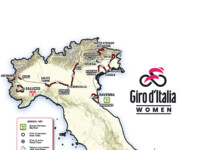While we can thank global warming for extending the outdoor cycling season in the Intermountain West, it’s likely that many of you will soon be take your riding indoors, either in your home or at a venue offering a structured winter training program. Often the training focus during winter is on developing greater power output.
But where does that power come from? There may be plenty you have read, heard about or know with regard to training plans, intervals, lactate threshold, cadence, metabolic efficiency, strength training, power/weight ratio and other factors affecting power output, but what about your riding position?
Yes – your riding position is going to influence how you generate power and transfer it to the pedals. Force is applied at the pedals, having being transferred through levers (leg bones) that are activated by muscles (hip extensors and knee extensors), which are stabilized by the pelvis and trunk. Force that is applied at the lower end of the body is initiated in the upper body. So there is more to power output than bigger, stronger quads!
Think of your riding position as your on-bike posture. Poor posture on the bike is all too common and can result from simply transferring your posture from sitting/driving/typing /slumping from other parts of your life to the bike. It can also result from not actively practicing an “athletic position” on the bike, or by compensating for a bike fit that is not optimal. Good on-bike posture results in better power production by creating a stable base from which the levers can generate force. That stable base is the pelvis, spine and shoulders, held in place by muscles of the core.
Good posture is really the same for any athletic pursuit. An erect yet neutral spine, subtle core muscle engagement, and an open airway allowing full breathing both in and out. Trying to ride a bike well while your body is slouched over it is like trying to escape a house fire while maintaining your Netflix posture. It’s going to be hard to move fast.
A good cycling posture is going to result from a combination of a good bike fit and awareness about how you are holding yourself on the bike. Elements of a good bike fit will include a saddle of suitable width and profile to support your pelvis, and a handlebar position that allows for a straight back and relaxed shoulders. While a good bike fit allows for good posture, it does not automatically create good posture. You have to do that.
So back to the winter training. Being trapped in a stationary trainer and riding on the spot usually results in a good dose of neurological boredom because you don’t have to navigate, balance, or steer. Use those idle neurons to focus on your riding position and improve your on-bike posture.
Here are a few things you can pay attention to:
- Notice your connection to your saddle. Are you well anchored and stable on it? Can you drive your sit bones into it? Experiment with tilting your pelvis forward and back. Can you find neutral?
- Are your shoulders plugged in and relaxed, or hunched up or rounded forward? Lift and extend from your sit bones to your sternum. Notice a contraction in your abdomen and an expansion in your chest cavity. Can you breathe more fully, both in and out? Slump down and try that deep breathing again. Notice a difference?
- Load up the resistance and explore how you feel in different positions. What feedback is your power meter giving you?
Assume the position…focus on your posture, and you will be setting yourself up for better power output, improved efficiency and a stellar season. Enjoy your ride.
John Higgins wants to elevate your cycling experience. He operates BikeFitr – an independent bike fitting studio, and Fit Kit Systems – supplying equipment and education to bike retailers and fitters. Contact: [email protected]












On the road, the bicycle moves up and down as it moves over road irregularities, which causes the rider to decouple body mass (suspended mass) from the bicycle. As well, the bicycle rolls and yaws relative to the rider’s body. The cycling posture is optimized for performing a balancing act that must accommodate these movements, not to mention the for/aft motion of the bicycle relative to the rider (especially during off-the-saddle efforts but also in general). In contrast, on an indoor trainer the saddle and the bottom bracket are fixed to the ground, as is the handlebar. So, is it even possible to pedal from the same posture, given that the “boundary conditions” imposed by the indoor trainer are so vastly different than those imposed by a balanced bicycle?
For indoor training, are rollers therefore better than stationary trainers?
Hi Osman, I actually wrote that article quite a few years ago, and my understanding of posture and balance on the bike, and the variation between indoor and outdoor riding has progressed significantly since then.
Everything you mention re outdoors is true, and this requires good core engagement / activation. When riding inside on a trainer, if the bike is being held upright AND the handelbars are not free to turn, the core is de-activated and more weight is carried in the arms.
It is still possible to practice good posture inside on a trainer, but the external inputs are missing. For this reason rollers are far better for developing balance and posture indoors than a stationery trainer, but the stationery trainer is generally better for developing the “motor”.
Hence an indoor trainer is not an ideal cycling simulator, but is better as a cardio / endurance training tool.
The best of the indoor trainers for simulating outdoor riding is the Kurt Kinetic Rock n roll and the companion rotating riser ring. The former provides for lateral movement and the later allows for independent handlebar movement. Together this helps with stimulating core engagement, which is needed to stabilize the pelvis, which is needed to drive the legs.
Comments are closed.